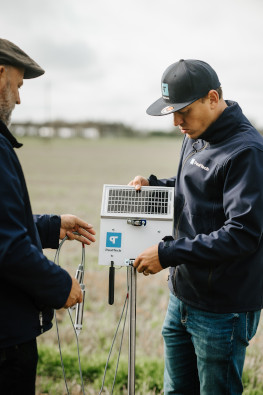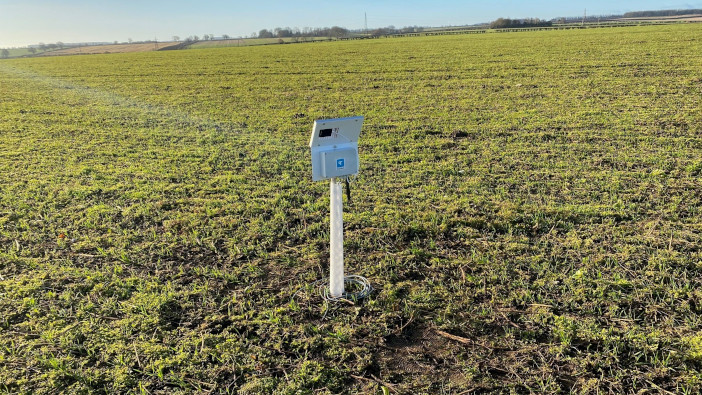A new soil sensor, designed and produced by Estonian company Paul-Tech, is starting trials on 20 UK farms.
The product can accurately measure nutrient movement through the soil, helping growers to optimise nutrient uptake efficiency (NUE) when planning their fertiliser usage.
According to the company, the system has helped one Finnish onion grower, AFC Uussaari, to cut nitrogen use by 70%, while improving yields by 5%. This resulted in an 82kg per hectare saving on fertiliser.
Owner Aleksi Uussaari said: “Having data from my soil was crucial in understanding how our actions affect the growing environment. We used data from Paul-Tech to determine the amount of unused nutrients in our soil, and when adding additional nutrients would be ineffective.”
The station is now being trialled at more than 20 locations in the UK, including on farms in the West Midlands, Herefordshire, East Anglia, Lincolnshire, and Yorkshire.

Mikk Plakk, chief executive of Paul-Tech, said: “The technology is employed in a significant number of European countries across arable and vegetable growing operations, and is enabling farmers to get a much richer picture of how nitrogen and other nutrients move through the soil.
“Trialling the technology in the UK will provide British growers with unparalleled insights into what is going on under the surface of their fields, and will help build a national picture of soil health.”
Clive Bailye is one of the growers taking part in the UK trials. He described the sensor as another tool in the box to help farmers make better decisions. “We’re all aware of variable rate fertiliser applications and we get information on the quantities we need to apply but not the timings. Having something that can help with timing is new and that really captures the imagination.
“The soil station will say ‘now is the optimum time to apply fertiliser’ or better still, it will tell you if the fertiliser you applied two weeks ago is still in the soil and you don’t need to apply more. That could save a significant amount of money.
“We made our first nitrogen application and it’s really interesting to see that going through the soil profile as you’ve got the advantage of the deep sensor too. I’m excited to see how it will evolve through the season and what that will mean for us.”
Ian Matts, of Brixworth Farming, had been trying various techniques, including cover crops and catch crops, to improve nutrient cycling on the farm. He is currently trialling two of the sensors.
“What we want to do is identify the differences in both the amounts and timings of nitrogen release and availability between different previous crops and where catch crops have been utilised.
“We know, for example, there’s a big response to nitrogen following spring oats. We know this is different following beans, but not necessarily to what extent, or when. We are also keen to better understand these changes with a catch crop.
“We want to use the sensors to see if we can identify any differences between these conditions.”
For more information go to www.paul-tech.com


